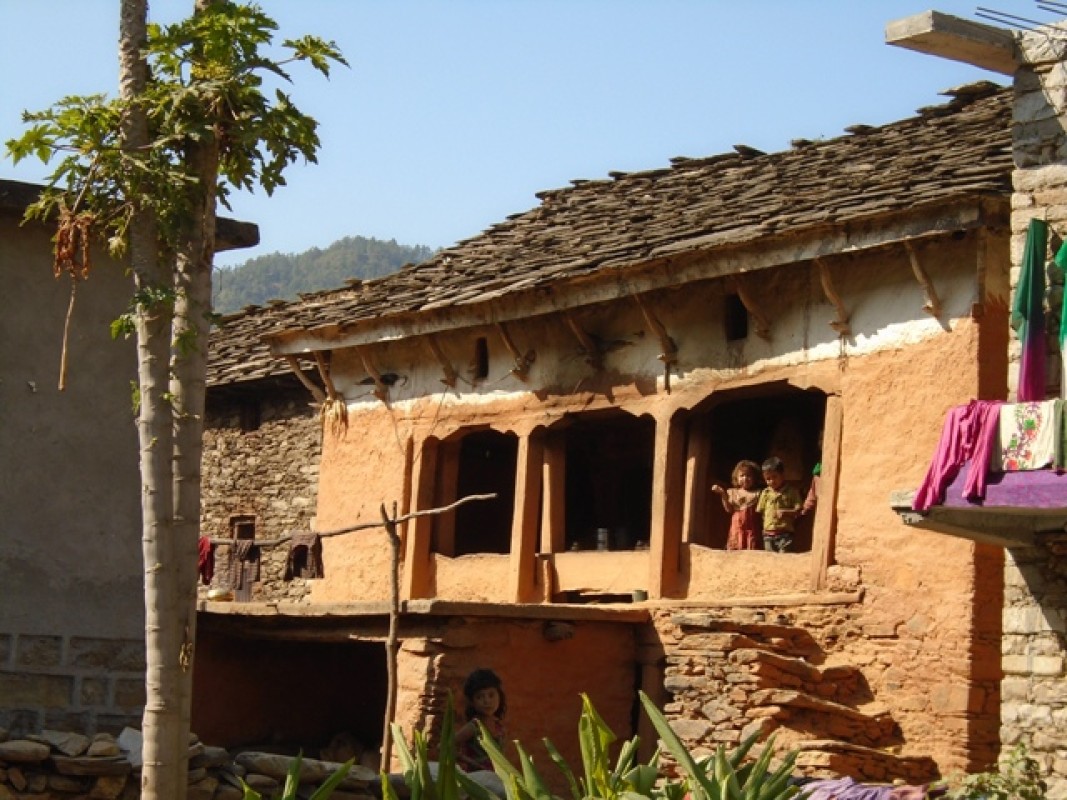
Tour feature: This tour is the blend of traditional villages, several Tharu tribal culture programs, several feasts, festivals and cultural events, ancient monuments in Mid/Far West Nepal and medieval era architectural city of Kathmandu, dozens of beautiful grasslands, tranquil lakes, interesting hanging cliffs, wild bee-hives in hanging cliffs, thundering waterfalls, forested hills, rare mountain flora and fauna, unique lifestyle of shepherds in Ramarosan, wildlife safari in Bardia National Park by jeeps (famous for one horned rhinos and elusive Bengal tigers!), and, beautiful landscapes, farmlands, intermountain river valleys, optional an hour thrilling flight to the Mount Everest; the highest mountain on earth. Good time for the trip is from late September to April.
Guide: English/other language speaking guide for the entire tour.
Valley of temples - Surkhet (7th century monument ‘Kakre Bihar..): Surkhet is a beautiful intermountain valley in the lap of Siwalik hills and Lesser Himalaya range where we see interesting terraced cultivated fields, settlements, tropical sal forests, hills and hillocks, mountains and can visit recently rebuilt 7th century Hindu and Buddhist combined monument ‘Kakre Bihar’ in forested hill surround by cultivated field, Deuti Bajai temple, Bulbule lake with colorful garden and observe lifestyle of locals.
Ramarosan lakes and grasslands: Located an elevation of 2000m to 3800m, Ramarosan is an interesting place of a dozen of tranquil lakes, one and half dozens of beautiful large marshy grasslands, series of hanging cliffs, thundering waterfalls, rhododendron-oak forested hills, rare mountain flora and fauna and wonderful lush green landscape where we can also observe unique lifestyle of shepherds etc. This is to home to the national bird of Nepal ‘DANFE’, pheasants, partridge, mountain crow, love bird, griffin vulture, rock bees, musk deer, leopard, tiger, wild boar, yellow throated marten etc. We can see wonderful view of Api-Saipal Himalaya range, Budhi Ganga valley and settlements from here. Boating is available here these days but not reliable. This is the main source of water for some rivers and lower valley region. This is also a holy land where there are numerous festivals takes place. This place is also known as one of the touristic destinations in the region.
Beautiful shrines and landscape along the route we visit in Far West Nepal: You will visit Pancha Dewals -the five stone shrines, one of the most interesting and important Hindu shrine Baiddhanath Dham, temples of the most powerful goddess Shaileshwori and Ugratara, Behedababa and Ghodaghodi Shiv temples and see more shrines along the route. It is a scenic drive where you see heart alluring river valleys, terraced cultivated fields, beautiful traditional villages, towns, forests, hills and hillocks. Typical lifestyle in the traditional villages like Binayak, Bannigadhi, Punna, Bandugrisain, Sirkholisain and wonderful unique landscape are additional attractions. Interested people also have choice of rafting in Karnali and Seti River.
Tharu tribes, village tour and observe their culture programs and fishing expedition in Far West Nepal: Over a dozen ethnic group of Tharu are Indo-Aryan Hindu people dwelling in lowland terai scattered from eastern to far western border of Nepal in the southern foothills of the Himalaya. It is said that they were the terai’s only ethnic group, roaming in the tropical dense forest and large grasslands with their animals before 1960s. They are mainly farmers grow various food grains and keep animals for the organic fertilizers.
Rana and Katharia Tharu are settled in Far West Nepal for centuries and it seems that they have no internal migration. Dangaura Tharu had famous kingdom in the Asia’s biggest intermountain valley ‘Dang’ just northwest of Lord Buddha’s birthplace Lumbini but in early 18th century after the invasion of Magar dynasty, many Dangaura Tharu migrated to Far West Nepal for the safety and survival. There is alluvial fertile soil in lowland terai with lots of wetlands where can be grown up good crops especially rice. So, year by year, for better crops and better lifestyle, most Dangaura families migrated to different of part of terai, Far West Nepal. Such movement was common till 1980s.
They have mostly thermal air conditioned cow dung-clay plastered house with clay tile made of wood, shrubs, fodder and clay. Muddy house walls are engraved with elephant, bird, fish, plant pictures and colorful wall painting is related to lifestyle of Lord Krishna and Pandava; the main 5 characters of the biggest Hindu epic Mahabharat. Forest, agriculture, earthen items are the main source of living. They grow all food they need like rice, wheat, lentil grains, mustard, flaxseed etc and keep cow and buffalo for milk, bull and male buffalo for transport, goat and sheep for meat, chicken and ducks for eggs and meat. Animal dung is used as fertilizer, fuel to cook food, scrub houses and mix it with mud and hay scrap to plaster house floor, yard and to make food garners and other household items. They collect forest products like fodder for animals, house roof, Dhakia baskets and brooms, plant bark for rope, jute threads and sacks, roots-shoots & wild fruits for vegetable, medicines, fermenting homemade beer ‘Chang’ and alcohol ‘Raksi’, wood for building house, household items, furniture & fixture etc. Whatever they need, they make their almost all things themselves from forest products, earthen items and animal dung. In present day, modernity is influencing their culture but new generation is trying to continue their ancestral profession and culture. Fish, snail, crab and mouse are their favorite fleshy meals. Even for a single fish or a mouse hunt they can spend a whole day. So, fishing and mouse hunting are quite popular in the community.
Most Tharu people plough field with a pair of oxen and dig the corners with spades. Wheat is sown in November and harvested in March-April. Similarly, rice is planted in May-June and harvested in October. Almost all members of the families of the societies go to farmland to work and a lady at home prepares food for them and carried to the field to serve them. Traditional way of farming and harvesting is interesting. Tharu women husk rice in ‘Dhiki’, traditional rice mill, wheat and other food grains are grinded in ‘Jaanto’, the flour mill, and mustard, flaxseed, hemp seed and sesame seed are squeezed in ‘Kol’ the oil mill. Traditional oil mill is not common these days but rice and wheat mills are common in every Tharu society. Their traditional way of working at home looks very interesting. Tharu are really skilled and almost self-sufficient people who manage the household work with mostly plant and earthen based items.
We organize their classic culture programs for our guests. You will observe very interesting culture dances and typical lifestyle, household activities, dramas, traditional wedding ceremonies, cooking traditional tribal dishes, fermenting local beer, home made distillery, husking rice, grinding cereals in traditional meals, weaving bamboo/shrub mats and baskets and their interesting fishing expeditions.
Wildlife safari in Bardia National Park: Adjoining the eastern bank of the Karnali River in the Bardia district, the largest and most uninterrupted wilderness lowland zone of Nepal terai, Royal Bardia National Park is a protected area established in 1988 covering an area of 968 km2. Within the boundary of Siwalik Hills in the north, highway and villages in the south, Geruwa, a branch of Karnali River in the west and Babai River, villages and partly Banke National Park in the east, it has lots big grasslands, dense tropical forests, Siwalik hills and traditional Tharu villages in the buffer zone area. Nepal’s longest highway connected from the eastern border to the Far Western border, East-West Highway (also called Mahendra Highway named by a late king Mahendra) goes through the middle of the national park. So, we drive through it with a certain limit of driving speed where the visitors must registers their vehicles and their information at the national park security check points (Nepal Army) in various places along the highway.
National Park is famous for elusive Bengal tiger, one horned rhino, giant Asian elephant, herds of swamp and spotted deer, red macaque (red monkey), black faced white monkey (langoor), wild boar, pythons, dolphin in Geruwa River etc. We often see herds of deer, rhino, monkey, peacock but tiger! There are only 2 places to drink water for tigers. If there is sunny day with no high sounds and no rough movement of human, there is high chance to see tigers (almost 99% chance in the afternoon of sunny day). If we drive through Bardia and Banke National Parks early in the morning, we may see tiger along the highway. As per the national park current rule, we should enter the national park in the morning for wildlife safari. Thus after having breakfast and taking pack lunch, we go for wildlife safari within the timeframe and takes whole day till 3-4pm.
UNESCO culture Heritage sites in Kathmandu valley: Kathmandu valley is itself a great museum of Hindu and Buddhist textual culture and animistic shamanism oral culture. As per the recorded history by stone sculpture, it has nearly about 1600 year old to recently built up monuments. Changu Narayan, Pashupatinath and Adeshwar are the oldest temples built up in 5th century in current form. However Changunarayan and Adeshwar temples were rebuilt after big earthquakes but Pashupatinath has no effect of earthquake due to its limestone solid foundation.
Kathmandu is a beautiful valley although in recent years it has changed a lot, with a myriad of buildings without any style. It has become noisy, chaotic and with a lot of pollution. It has not lost its ancient charm and if when we are at Durbar Square, we think only to immerse ourselves in its magical atmosphere, we will be able to forget all the negative aspects of this city. The city is located at 1,340masl and is situated in a central position with respect to the valley that dominates, more in the distance, around the valley, dozens of mountains more than 6000m high that form the Himalayan chain. The city can be visited in different ways, but the ideal is to discover it on foot.
Kathmandu Durbar Square: In the heart of the old city: the Durbar, that is "the square of the royal court", where it seems to go back in time. In the Durbar square, there are more than fifty temples and monuments and among these stands, the magnificent Temple of Taleju, which houses the deity of the royal family and which is possible to visit only externally. Its three roofs are covered with gilded copper and a series of jingling bells makes the atmosphere even more magical. It was built by King Mahendra Malla between 1549 and 1596 and dedicated to the Goddess Taleju Bhawani. The Kasthamandap, whose name means "wooden house", was built in the 12th century and it was King Laxmi Nar Singh Malla who wanted its construction with the wood of a single "sal" tree. Initially ceremonies were held in the building and it was the meeting place of the foreigners who participated in it and only later was it dedicated to Gorakhnath but due to 2015 earthquake, some of the monuments including this are totally collapsed. Tiny temple of Ashok Binayak with no spire is also known as Maru Ganesh, a deity much loved by the Nepalese, the elephant-headed god. Returning further to the square is the Temple of Shiva. Still in the square, the old Royal Palace, the Hanuman Dhoka (the monkey god) who was built in the 17th century by King Pratap Malla, although over the years they have been made several improvements and additions. Near the square, the Kumari Temple palace, a monastic building built in the mid-18th century and a masterpiece of Newari art, with richly carved wooden windows. Here lives the living goddess, or Kumari, incarnation of Taleju Bhawani, the protective goddess of the royal family, manifestation of Goddess Durga.
Bouddhanath Stupa: Here is the largest Tibetan community in Nepal, of which motions, have come here following the invasion of their country by China. The origin of this stupa is still unknown although it appears to have been built in the sixth century, at the time of the Tibetan king Srongsten Gompa, who had converted to Buddhism after marrying two wives, one Chinese and one Nepalese ‘Bhrikuti Tara’, both of Buddhist faith. It is the majestic largest stupa in Nepal. It was collapsed in 2015 earthquake but it’s rapidly rebuilt within 2 years in its original shape and size. Around the great stupa, many monasteries and shops have sprung up and every day dozens of faithful walk around its perimeter in a clockwise direction. The large white cap is often streaked with yellow / orange: it is the saffron powder thrown by the faithful as an act of devotion in honor of Buddha.
Pashpatinath: Pashupatinath is the most important Hindu temple in the country, dedicated to one of the manifestations of Lord Shiva and is a shepherd of animals, men and a symbol of fertility. The temple stands on the bank of the Bagmati river (born from the mouth of Shiva), where cremations take place. In the complex there is the Golden Temple, one of the most sacred temples of Nepal, whose access is allowed only to Hindus. Around the temple premises, there are hundreds of shrines built up in different dates from 5th century to the present.
Bhaktapur: 15km to the east of Kathmandu, the city of Bhaktapur, also called Bhadgaon, the "city of devotees", is the ancient capital of one of the kingdoms of the valley. Here, one can really breathe the air of the past, because unlike Kathmandu, vehicles cannot circulate in the old city that is covered, therefore only on foot, and most of the buildings are wonderful examples of Newari architecture. It is certainly one of the most interesting places in Nepal, where it seems to return to the medieval era. It appears to have been founded in the 9th century by the legendary King Ananda Dev Malla and was the capital of the valley from the 14th to the 16th century.
There are so many monuments like temples, palaces, culture history museum, buildings, water spouts, holy ponds, big bells, clay pottery and artistic stuffs in and around Bhaktapur Durbar Square, Dattatraya Square, Taumdhi Square and Pottery square. Similarly one can observe and experience typical lifestyle of local inhabitants Jyapu Newars working in and around.
Patan: 5km southeast of Kathmandu, Patan is known as the finest city of temples and palaces. It played an important role over the centuries, even when the valley was divided into many feudal kingdoms. In 1372 it was conquered by a king of the Malla dynasty named Jayasthiti who, after ten years, unified the valley bringing the capital to Bhaktapur. During the reign of the Malla, the beautiful temples and palaces were built.
There are so many beautiful monuments like Krishna Temple, Bhimsen temple, royal palaces, Patan museum, several temples in the Patan Durbar Square, water fountains, Patan’s oldest and valley’s one of the two tallest temples Kumbheshwar Shiva Temple built in 1392 (spire damaged by 2015 earthquake), Golden Temple (Hiranya Varna Mahavihar) etc.
Budhanikantha: Budhanikantha is a sacred place where only the Hindus faithful of Vishnu converge, the god of a thousand names, of various forms and incarnations who is also presented as the god Narayan lying on the cosmic ocean. In this temple, the stone statue of Vishnu lies stretched out in a tub full of water, on a bed formed by the coils of the eleven-headed serpent Ananta. Many are the faithful who come to this place, because this statue is loved and venerated throughout the valley. Only a man cannot see it and it is the king who only dared (representing himself an incarnation of Vishnu), would die from electrocution. Legend has it that the statue was found by a farmer plowing his field. His ploughshare bumped into something and he started to ooze blood and then he started digging and found the statue. It is about 5 meters high and could date back to the 7th / 8th century, at the time of the Licchavi.
Monthly rainfall & temperature of some tour places of Nepal
|
|||||||||||||||||||||||||||||||||||||||||||||||||||||||||||||||||||||||||||||||||||||||||||||||||||||||||||||||||||||||||||||||||||||||||||||||||||||||||||||||||||||||||||||||||||||||||||||||||||||||||||||||||||||||||||||
Day01: Arrive Kathmandu, sightseeing in Kathmandu valley, 5* hotel.
Day02: Sightseeing in Kathmandu, fly to Nepalgunj, 5* hotel.
Day03: Drive to Surkhet -Rakam Karnali, explore Surkhet, monuments, lifestyle & landscape, dinner & overnight in tent /river camp.
Day04: Drive to Ramarosan, camp in grassland.
Day05: Explore Ramarosan, camp in grassland.
Day06: Drive to Silgadhi, Shaileshwori Temple premises, monuments, lifestyle and landscape, camping.
Day07: Drive to Dadeldhura, monuments, lifestyle and landscape, camping.
Day08: Drive to Dhangadhi, lifestyle and landscape, 3* hotel.
Day09: Dangaura Tharu tribal village tour and culture programs, 3* hotel.
Day10: Rana Tharu and Kathariya Tharu tribal village tour and culture programs, 3* category resort.
Day11: Wildlife safari in Bardia National Park, drive to Nepalgunj, 5* hotel.
Day12: Drive to Kathmandu, free afternoon, 5* hotel
Day13: Explore Bhaktapur and Patan, Jhakri dance & farewell performance in Raniban. 5* hotel.
Day14: Fly back home
Detailed itinerary
Day 01: Arrive Kathmandu, transfer to hotel/ Sightseeing in Kathmandu
Upon arrival at the airport, after completing the visa formalities, meet local representative and transfer to hotel by private bus. Check in hotel, relax till noon, have lunch and in the rest of the day, we can begin to discover this incredible city.
Leave hotel around noon, drive to Kathmandu Durbar Square. Kathmandu is an open-air museum and although in recent years it has changed a lot, with a myriad of buildings without any style, it has become noisy, chaotic and with a lot of pollution, it has not lost its ancient charm and if when we are at Durbar Square we think only to immerse ourselves in its magical atmosphere, we will be able to forget all the negative aspects of this city. The city is located at 1,340masl and is situated in a central position with respect to the valley that dominates, more in the distance, around the valley, dozens of mountains more than 6000m high that form the Himalayan chain. The city can be visited in different ways, but the ideal is to discover it on foot.
In the heart of the old city: the Durbar, that is "the square of the royal court", where it seems to go back in time. In the Durbar square, there are more than fifty temples and monuments and among these stands the magnificent Temple of Taleju, which houses the deity of the royal family and which is possible to visit only externally. Its three roofs are covered with gilded copper and a series of jingling bells makes the atmosphere even more magical. It was built by King Mahendra Malla between 1549 and 1596 and dedicated to the Goddess Taleju Bhawani. The Kasthamandap, whose name means "wooden house", was built in the 12th century and it was King Laxmi Nar Singh Malla who wanted its construction with the wood of a single "sal" tree. Initially ceremonies were held in the building and it was the meeting place of the foreigners who participated in it and only later was it dedicated to Gorakhnath but due to 2015 earthquake, some of the monuments including this are totally collapsed. Behind this building is the tiny temple of Ashok Binayak, also known as Maru Ganesh, a deity much loved by the Nepalese, the elephant-headed god. Returning further to the square is the Temple of Shiva. Still in the square, the old Royal Palace, the Hanuman Dhoka (the monkey god) who was built in the 17th century by King Pratap Malla, although over the years they have been made several improvements and additions. Near the square, the Kumari Temple palace, a monastic building built in the mid-18th century and a masterpiece of Newari art, with richly carved wooden windows. Here lives the living goddess, or Kumari, incarnation of Taleju Bhawani, the protective goddess of the royal family, manifestation of Goddess Durga.
Drive to Swoyambhunath, the monkey temple where can be seen poor skinny monkeys everywhere. It’s a beautiful forested holy hill in the middle of the Kathmandu city with numerous Buddhist stupas, prayer wheels and flags, handicraft shops and thanka paintings. It also provides beautiful view of Kathmandu valley and valley rim in the horizon in the evening time. Drive back to hotel via Kalimati vegetable and fruit market. Dinner and overnight.
Day02: Sightseeing in Kathmandu, fly to Nepalgunj, hotel
After breakfast, check out hotel, we spend a few more hours discovering Kathmandu, before moving to the airport for flying to Nepalgunj. We will visit UNESCO culture heritage sites Bouddhanath and Pashupatinath in the morning. Have lunch at Airport Hotel, transfer to airport then fly to Nepalgunj. You admire the wonderful Himalaya range from the right side window of the plane. Transfer to hotel. Depending on the time, you can visit Bageshwori Temple premises in Nepalgunj in the evening. Return to the hotel. Dinner and overnight.
Day03: Nepalgunj - Surkhet - Rakam (660m) 110km, approx. 6/7 hour drive, camp
Have breakfast, drive to Surkhet through Bardia National Park, cultivated fields, forests, river valleys, Siwalik hills and settlements. visit Deuti Bajei Temple, Bulbule Lake colorful botanical garden and Kakre Bihar- 7th century monument of Hindu and Buddhist. Have lunch at Hotel Siddhartha or similar hotel then drive continue to Rakam Karnali. It is a beautiful scenic drive along Karnali River valley. Camp by the river. Dinner and overnight.
Day04: Drive to Ramarosan (2350m), 110km, 7-8 hour, camp
After having breakfast, drive to Ramarosan through villages, beautiful hills, hill slopes, terraced cultivated fields, river valleys and forests. We visit interesting artistic stone columns Pancha Dewals in Binayak and some traditional villages along the road. Have pack lunch on the way. Camp in grassland below the lakes. Dinner and overnights.
Day05: Explore beautiful holy land Ramarosan lakes and grasslands…, camp
The day is dedicated to explore the beauty of holy land Ramarosan. Hike up to the lakes, explore the heart alluring nature; tranquil lakes, large grasslands locally known as patans grazing cattle, hanging cliffs where we can see thundering cascades and wild bee-hives, and rhododendron-oak forests. We may also see colorful Himalayan munal DANFE; the national bird of Nepal, pheasants, griffin vulture, musk deer, wild boar and occasionally leopard. We can see beautiful view of Api and Saipal Himalaya range and river valleys from there. You may have unique experience with typical lifestyle of shepherds in the region. Today, you will have pack lunch. Return to the camp. Dinner and overnight.
Day06: Drive to Silgadhi (1285m), Shaileshwori Temple premises, 118km, approx. 7-8 hour, camp
After having breakfast, drive to Silgadhi through beautiful farmlands, traditional villages, hills and hillocks and river valleys. On the way, we visit the most interesting Hindu temple premises Baiddhanath by the confluence of Budhiganga and Saraswoti river. Road bends in Sanagaon and Khirsain seem very interesting. Upon arrival in Silgadhi, have lunch then you can visit one of the traditional villages; Pakari, Kalena or Punna and Silgadhi bazaar in the afternoon. Dinner and overnight.
Day07: Drive to Dadeldhura (1710m), 75km, approx. 3-4 hour, camp
Visit one of the most important Hindu temple of powerful goddess Shaileshwori in the morning where you see pilgrims ring holy bells, praying and worshipping. Big festivals take place here in September-October-November and March but ritual performances take place all year round. Have breakfast then drive to Dadeldhura through beautiful large farm fields along Seti River valley, hills, villages and towns. On the way to Dadeldhura, we visit Sirkholisain traditional village where you see colorful cow dung plastered houses in the bank of Seti River. You will also see typical interesting lifestyle of mountain locals there. You will have late lunch in camp then visit Ugratara Temple, historical Amargadhi and Dadeldhura bzaar in the afternoon. Dinner and overnight. Today is the last night in tent.
Day08: Drive to Dhangadhi (180m), 145km, approx. 5 hour, hotel
Drive to terai town Dhangadhi through beautiful mountain ranges, steep hill slopes, forests, traditional villages, towns, farm fields and river valleys. You will see typical lifestyle of mountain people along the road side. There is the biggest forested hill Tele Lek. You will see beautiful plain land from Budhitola forested hill then will descend to Godawari through forested hill where you see interesting beautiful road bends just before terai. Have pack lunch on the way. Check in hotel. Dinner and overnight.
Day09: Behedababa Temple, Dangaura Tharu village & culture program, hotel
After having breakfast, drive to Behedababa Temple premises. Many pilgrims from all parts of the region, Kathmandu and northern part of India visit this holy land to make their wish successful. Aunsi (dark fortnight) and Purnima (full moon) fairs are celebrated twice a month. Every year, there are very interesting three major festivals- Ganga Dashara Mela during June, Beheda Baba Mela during August and Maghi Mela in mid-January. After visiting this holy shrine, we drive back to Rampur Dangaura Tharu village.
The group will be greeted with very interesting culture performance. Explore their typical village where you will see traditional clay dung plastered houses made up of mud and hay. The thermal air conditioned houses have tiny windows for the light whereas the clay tile roofs are well ventilator. The outer walls of the houses are embossed with animals, birds and flowers figures. Clay horse representing their GOD placed in a separate hut just front of the house is really wonderful. Agro and forest based handmade household products handing in the roofs and walls look very interesting. Shed for cow, sheep, buffalos and pig attached with the houses is another attraction. This is the most traditional and dense Dangaura Tharu village with over 60 households.
We will walk through village to observe their typical lifestyle, watch their interesting activities. Boys and girls perform several dances separate and together in their traditional outfits. Tharuni (Tharu women) look so beautiful in their traditional outfits and ornaments. Near the village there are lotus blooming 2 beautiful natural lakes where Dangaura people will show their way of fishing. Interested people can go for fishing and boating there. Drive back to hotel. Dinner and overnight.
Day10: Rana and Kathariya Tharu village tour and their culture programs, drive to Chisapani, 100km, approx. 3 hour, hotel
Today, the day is dedicated to the discovery of the Rana Tharu and Kathariya Tharu culture. After having breakfast, drive to Rana Tharu village. Arrive the village inhabited by the ethnicity of Rana Tharu to discover together their traditions and to watch their dances and to discover their particular fishing system. In each village there is an official called Mahato/Badghar whose job it is to maintain the law and order. He is in effect the head of the village. In the village we will be able to observe their mud-built dwellings. The external walls are decorated in relief with images of animals and flowers. The clay horses represent their divinity and are placed in separate huts in front of their home. Products of the forest and vegetable gardens are hung to dry under the roofs of the houses. Observe their unique culture programs like welcome dance, Sakhiya Dance -girls and boys dance, Jato- traditional grinding mill, lunch serving to the farm field, their way of cooking, working in farm field, typical outfits, jute rope making, basket craft, wall painting, fishing…
Drive to Ghodaghodi, the biggest lake in the region where we see Shiva Temple, statue of monkey God Hanuman, some shrines, sadhu. Ghodaghodi Shiva temple is famous for wedding ceremonies especially in February to April, September to December (mid Oct-mid Nov no wedding). Religious and cultural events are organized all year round. We can observe migratory birds; goose, crane and some wetland species in the lake.
Drive to Katharia Tharu tribal village to watch their dances in traditional costumes. The ethnicity of the Katharia Tharu has many features in common, regarding the clothing and architecture of the houses. According to researcher Krauskopff, the Katharia are divided into two "subgroups", the Pachala and the Purbyas. As for all the Tharus, also for the Katharia, the fishing activity plays a very important role, even if the techniques used differ a lot from group to group. They build their houses using the clay mixed with water and the interior walls are decorated with figures representing the life of Lord Krishna, mentioned in the Hindu epic poem, the Mahabharata, while the external walls are engraved both with figures symbolizing prosperity and pleasure, both with subjects like the elephant, the peacock and the lotus flower. Inside the houses there are also particular terracotta granaries, also masterfully decorated. Even the costumes worn by Katharia women have a special charm.
Observe their culture programs like welcome dance, Gopi-Gopini Dance -girls and boys dance related to Lord Krishna and his male & female friends, Guruwa Dance- Shamans’ performance, Katharia Tharu’s way of cooking, Jaand Chhanne -fermenting homemade beer, Raksi Bhatti -traditional distillery/homemade alcohol, Jato- traditional grinding mill/flour mill, farming/harvesting crop, typical outfits, basket craft, wall paintings. Drive continue to Chisapani, at the bank of Karnali River; the longest river of Nepal. Check in hotel. Dinner and overnight.
Day11: Wildlife (tiger!) safari in Bardia National Park - drive to Nepalgunj, about 125km, approx. 3 hour, hotel
After having breakfast, drive through Bardia National Park, arrive Thakurdwara, professional local jungle guide with pack lunch joins jungle safari and quietly stop at hotspots to see wildlife like wild rhinos, elephants and elusive Bengal tigers. If you are very lucky you can see Bengal tigers, especially in sunny day. Drive back to the Highway. You can see huge crocodiles lying in the sandy bank of Babai River. Drive to Nepalgunj through Bardiya National Park, settlements and farm-fields. Dinner and overnight in hotel.
Day12: Fly to Kathmandu, explore Patan and Bhaktapur, hotel
The day is dedicated to explore the most interesting, medieval era exquisite artistic and well preserved UNESCO culture heritages sites; Patan and Bhaktapur.
Patan: We head towards Patan which is 5 km from the capital. Another name, Lalitpur, means "city of beauty". And it played an important role over the centuries, even when the valley was divided into many feudal kingdoms. In 1372 it was conquered by a king of the Malla dynasty named Jayasthiti who, after ten years, unified the valley bringing the capital to Bhaktapur. During the reign of the Malla, the beautiful temples and palaces were built. This city is known as the finest city of temples.
There are so many beautiful monuments like Krishna Temple, Bhimsen temple, royal palaces, Patan museum, several temples in the Patan Durbar Square, water fountains, Patan’s oldest and valley’s one of the two tallest temples Kumbheshwar Shiva Temple built in 1392 (spire damaged by 2015 earthquake), Golden Temple (Hiranya Varna Mahavihar) etc. Then drive to Bhaktapur, have lunch then visit Bhaktapur.
Bhaktapur: Fifteen kilometers from Kathmandu, the city of Bhaktapur, also called Bhatghaon, the "city of devotees", is the ancient capital of one of the kingdoms of the valley. Here you can really breathe the air of the past, because unlike Kathmandu, vehicles cannot circulate in the old city that is covered, therefore only on foot, and most of the buildings are wonderful examples of Newari architecture. It is certainly one of the most interesting places in Nepal, where it seems to return to the medieval era. It appears to have been founded in the 9th century by the legendary King Ananda Dev Malla and was the capital of the valley from the 14th to the 16th century.
There are so many monuments like temples, palaces, culture history museum, buildings, water spouts, holy ponds, big bells, clay pottery and artistic stuffs in and around Bhaktapur Durbar Square, Dattatraya Square, Taumdhi Square and Pottery square. Similarly, you can observe and experience typical lifestyle of local inhabitants Jyapu Newars working in and around. There are so many things to visit and after a general explanation in every square, free time will be left for everyone, so that everyone can enjoy the atmosphere.
Observe unique Jhankri dance (Shamans performance) and for farewell performance by local representative. Dinner and overnight.
Day13: Sightseeing and shopping in Kathmandu
After breakfast, visit Budhanikantha Narayan, the 7th century stone statue of Lord Vishnu located in the northern corner of the valley. Observe ritual performances in the complex then watch a documentary in Halchowk that is produced on the lifestyle of Lo tribes of Royal Mustang by National Geography. Farewell lunch (typical Nepali meal) in Raniban. Then free afternoon for shopping or relax. Return to the hotel. Dinner and overnight.
Day14: Program over, fly back home
After breakfast, open for next program or transfer to the airport. Fly back home.
Tour cost per person in US dollar: $2699 // 1pax complimentary in every 10 paid guests in group.
Trip cost includes: All accommodation (twin sharing basis) & food; three meals a day -breakfast, lunch and dinner (except bar bill), insured crew (guide, assistants, drivers and necessary kitchen crew for camping trip), all essential permits, all domestic transportation as per the itinerary, service charge and government taxes.
Trip cost does not include: International airfare, Nepal visa, your travel insurance, personal expenses (like laundry, communication, alcohol, cold drinks), tips to serving crew, emergency evacuation, extra cost due to natural and political causes such as landslides, unrest, strikes etc, expenses of extra hotel & other services abandoning the trip before/after scheduled, and cost not mentioned in includes section.
Payment system
Refund system
In case of trip cancellation in the last 10 days of group arrival, 50% of the deposited amount will be deducted. If the trip cancels 10 days before the group arrival, we settle the full amount in next trip.
This tour is the blend of traditional villages, several Tharu tribal culture programs, several feasts, festivals and cultural events, ancient monuments in Mid/Far West Nepal and medieval era architectural city of Kathmandu, dozens of beautiful grasslands, tranquil lakes, interesting hanging cliffs, wild bee-hives in hanging cliffs, thundering waterfalls, forested hills, rare mountain flora and fauna, unique lifestyle of shepherds in Ramarosan, wildlife safari in Bardia National Park by jeeps (famous for one horned rhinos and elusive Bengal tigers!), and, beautiful landscapes, farmlands, intermountain river valleys, optional an hour thrilling flight to the Mount Everest; the highest mountain on earth.
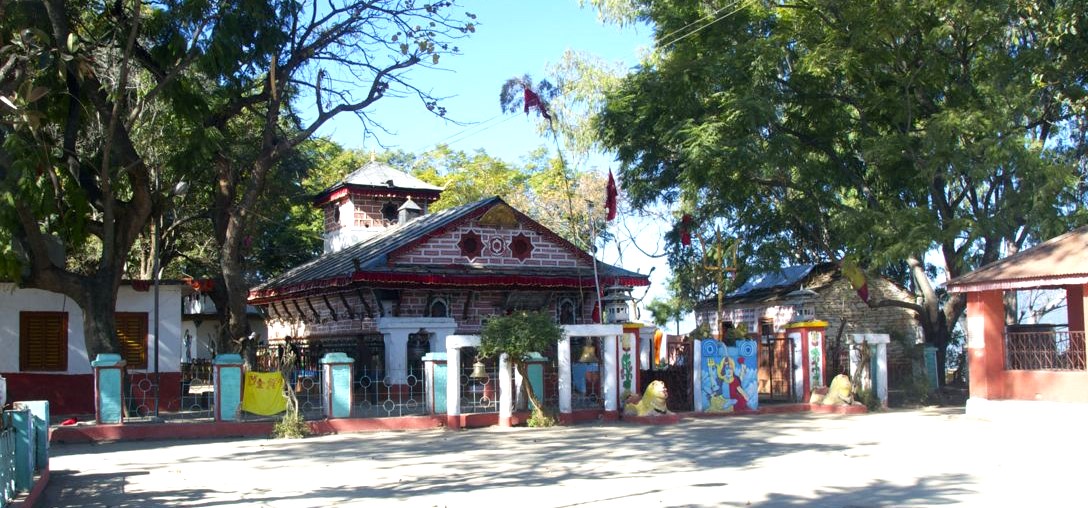
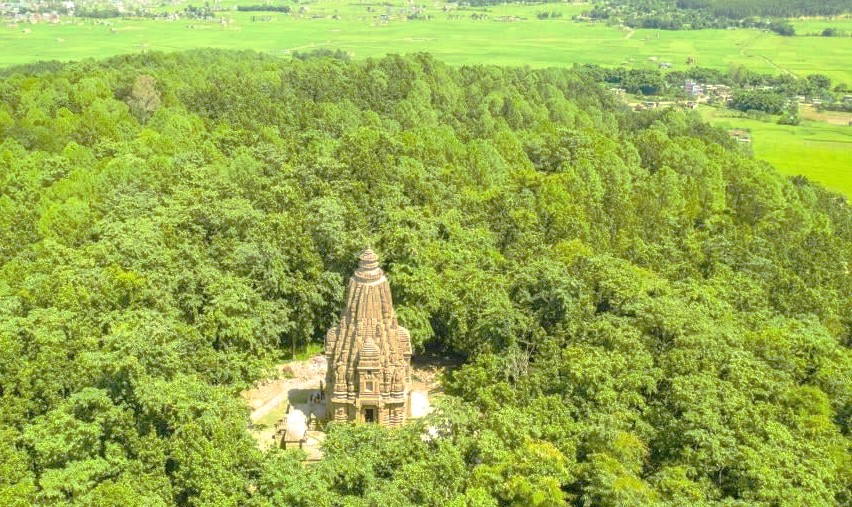
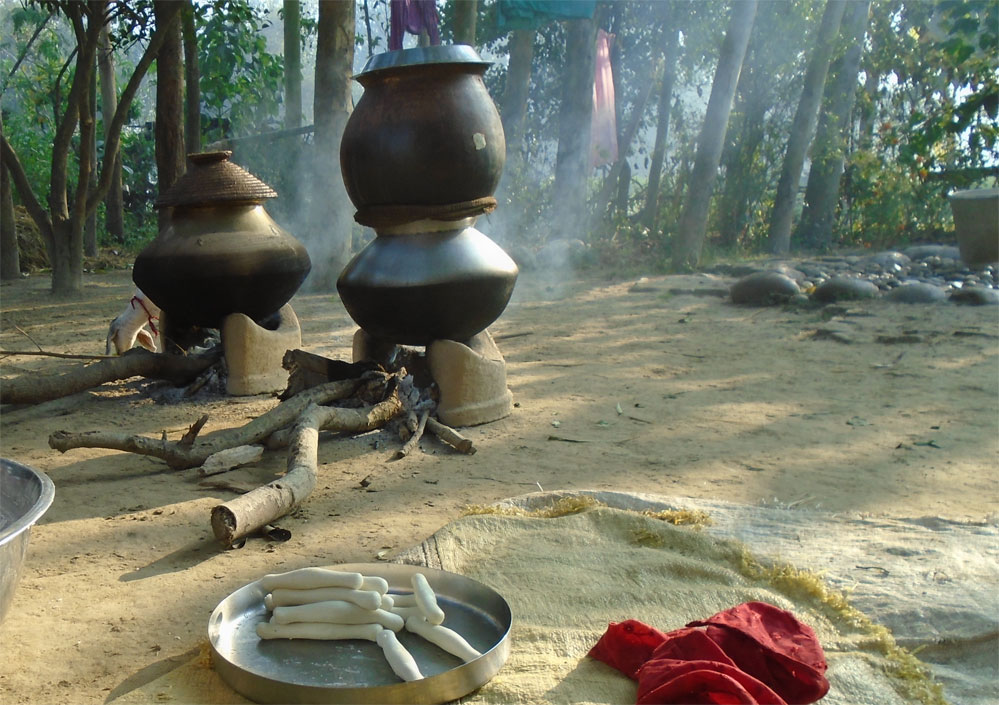
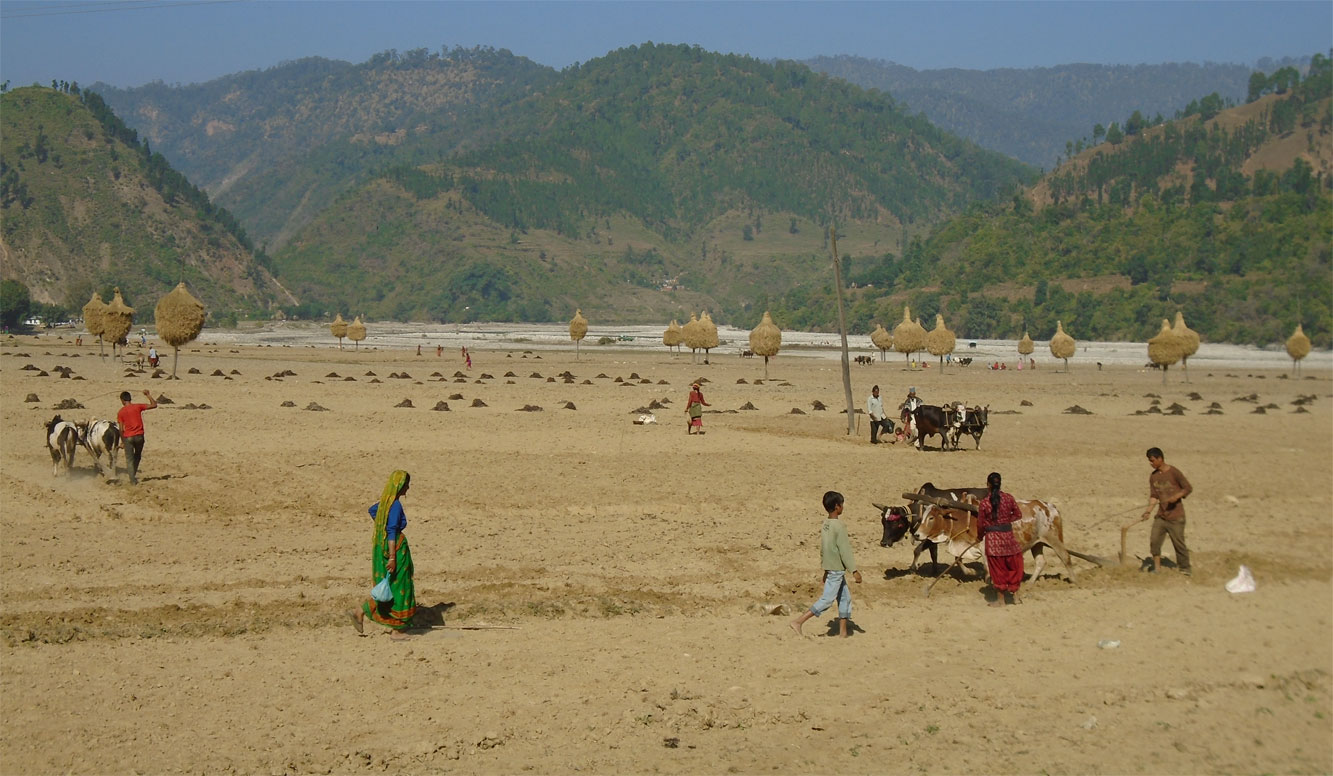
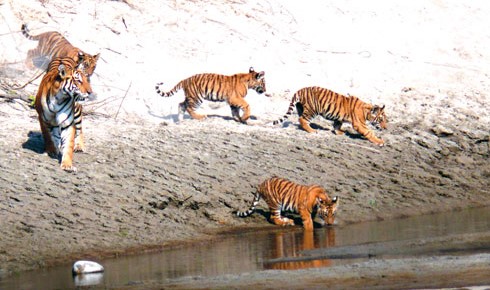
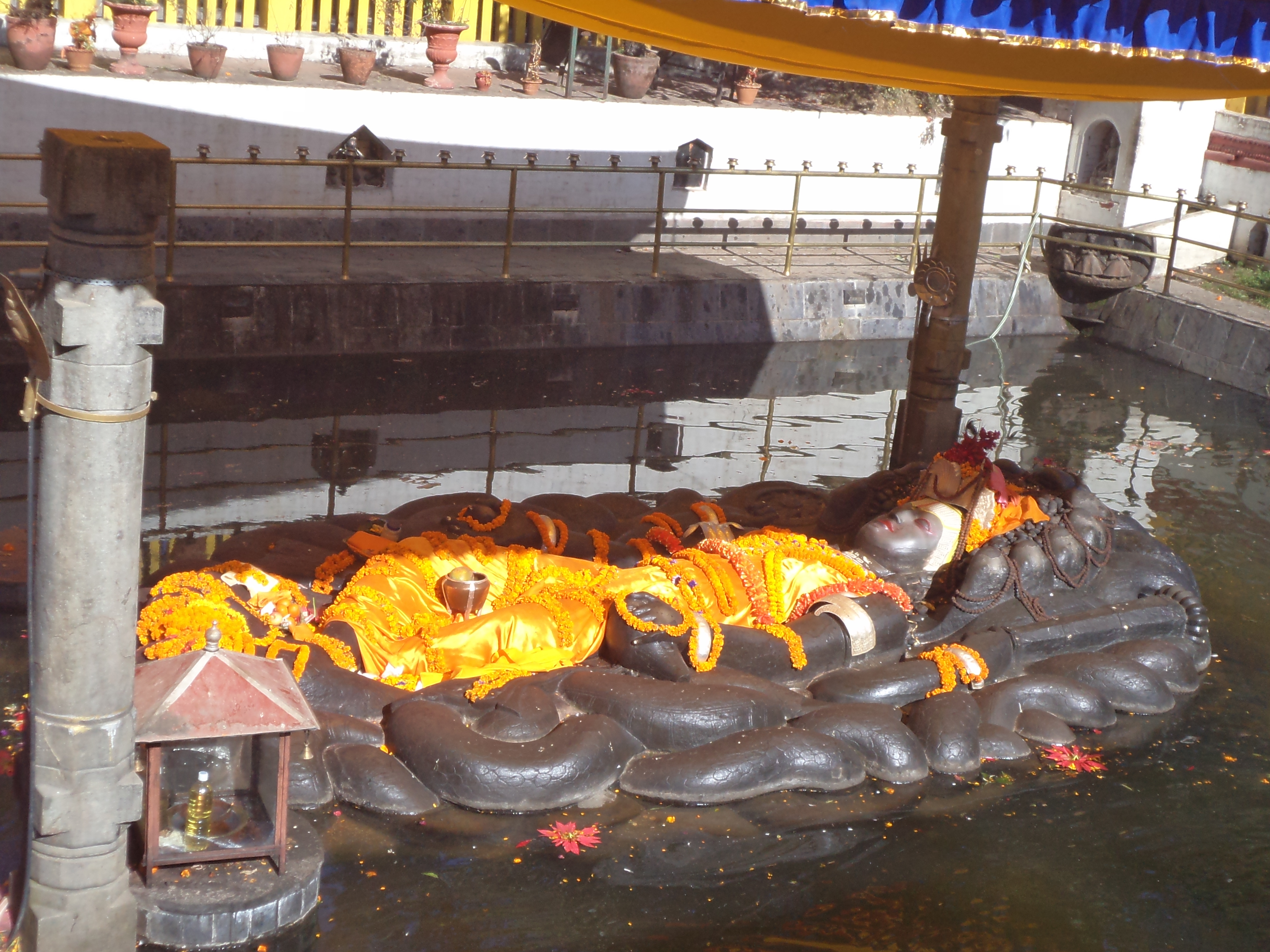
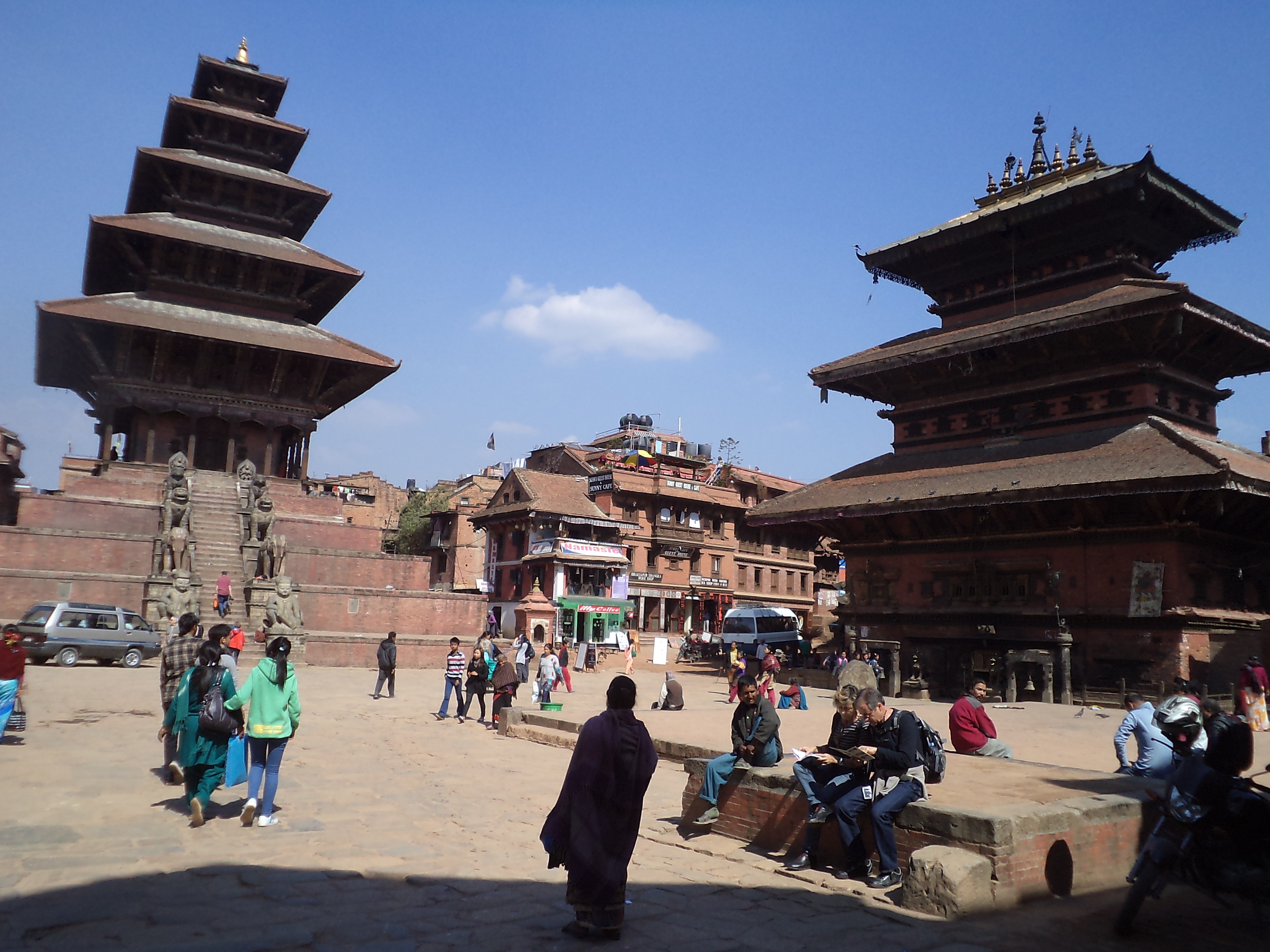
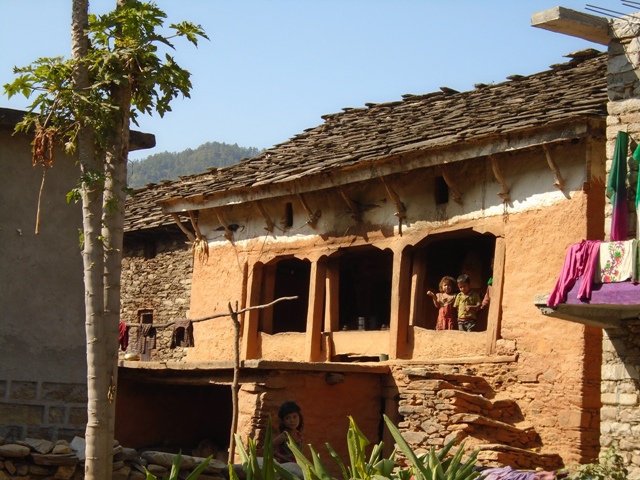
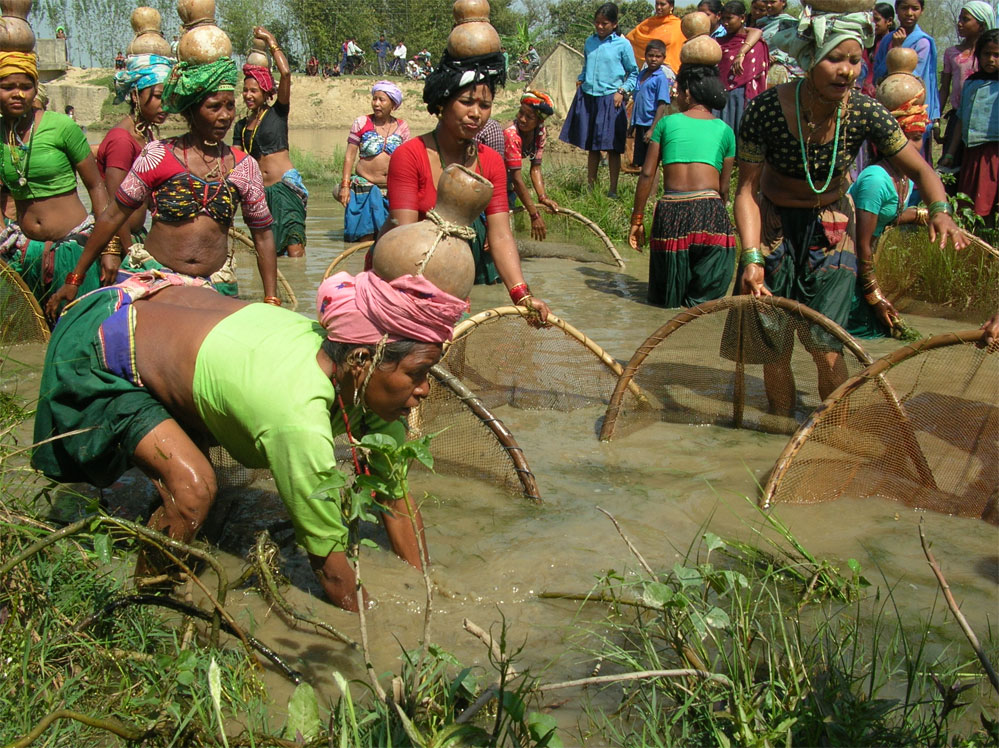
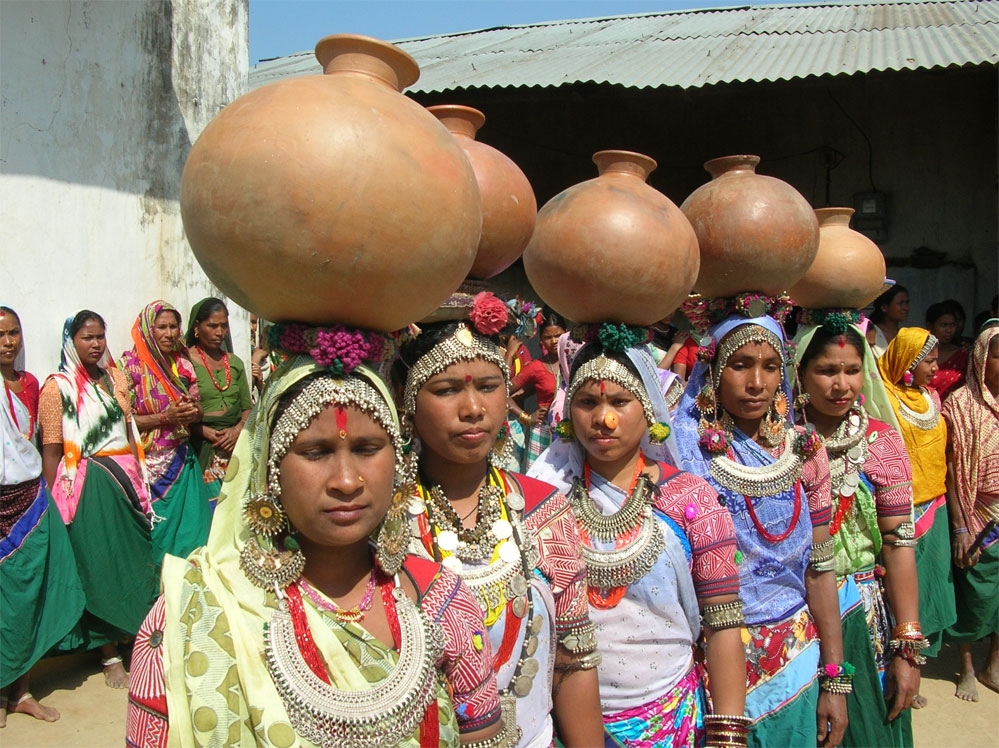
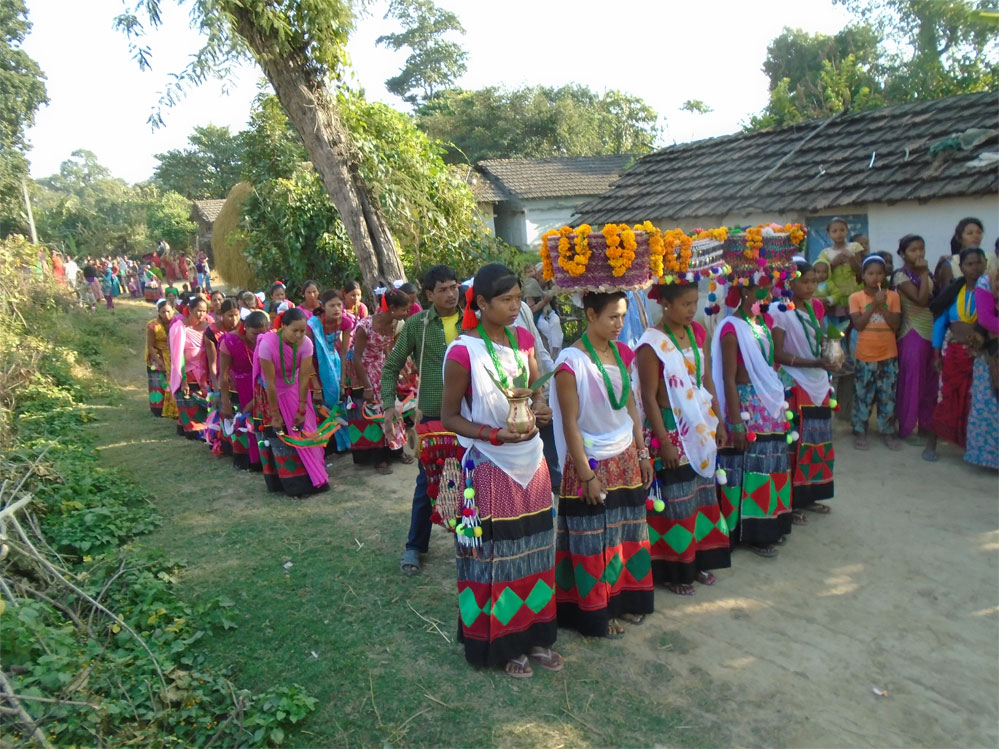
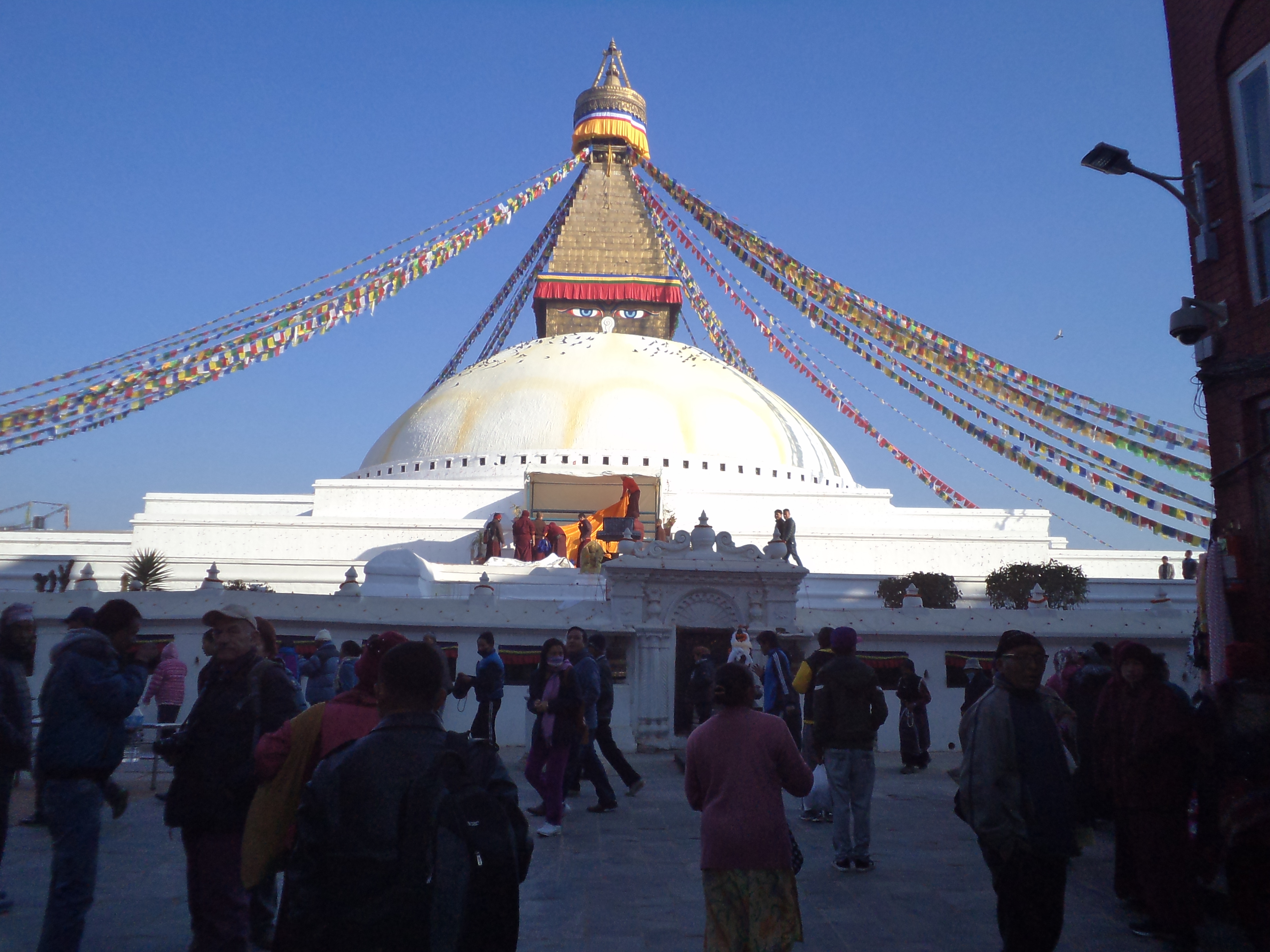
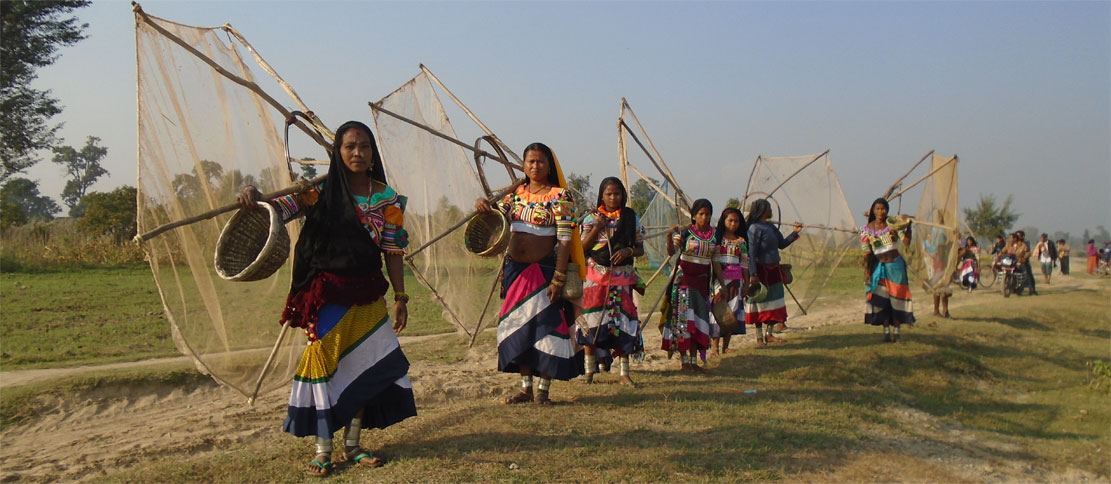
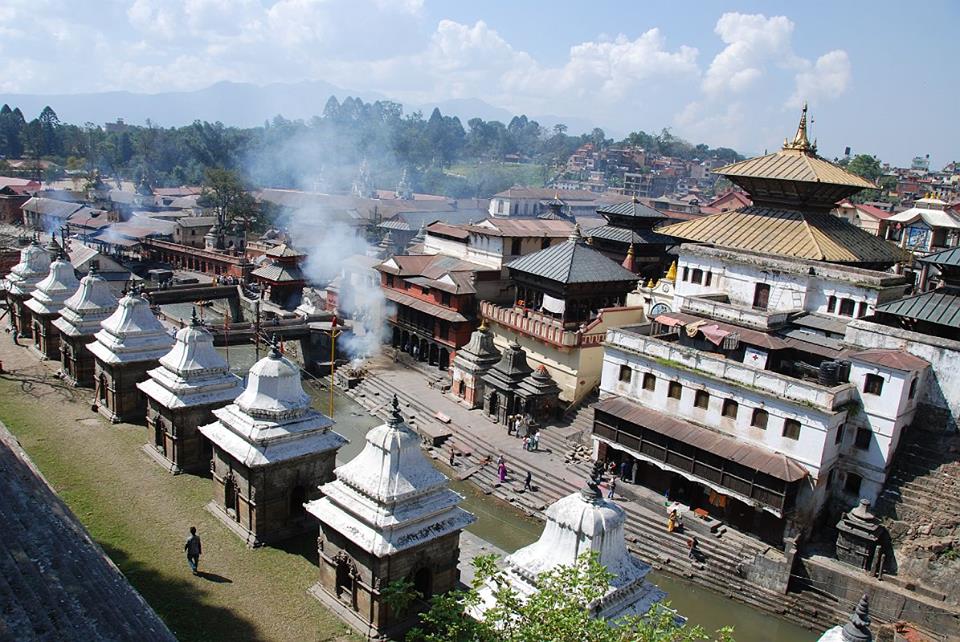
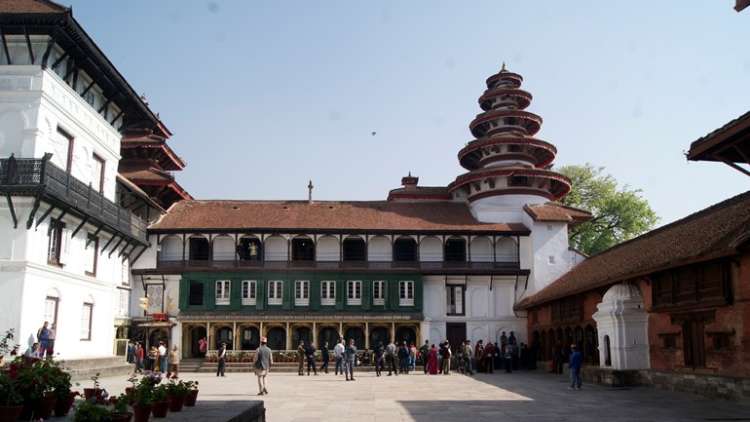
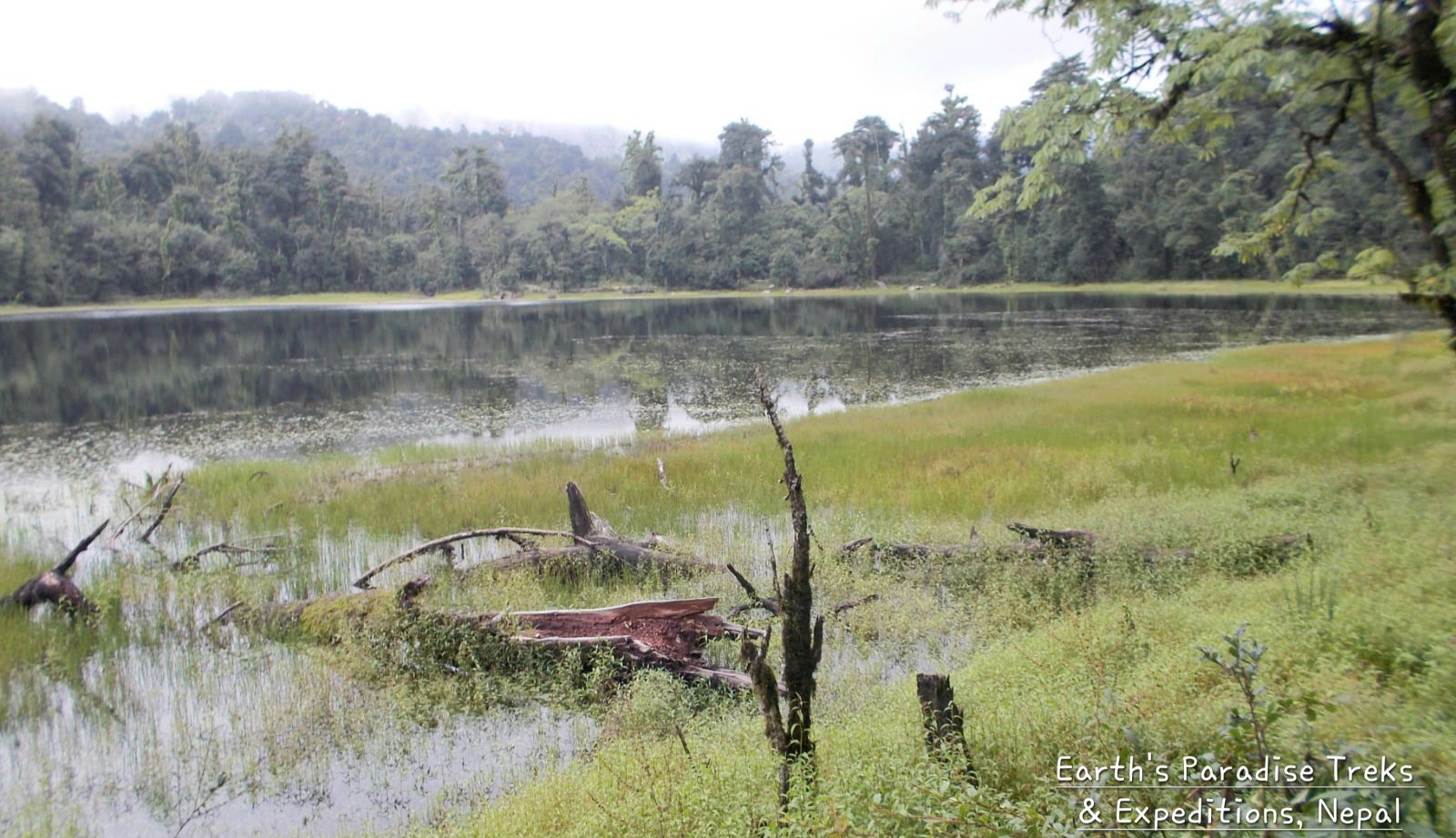
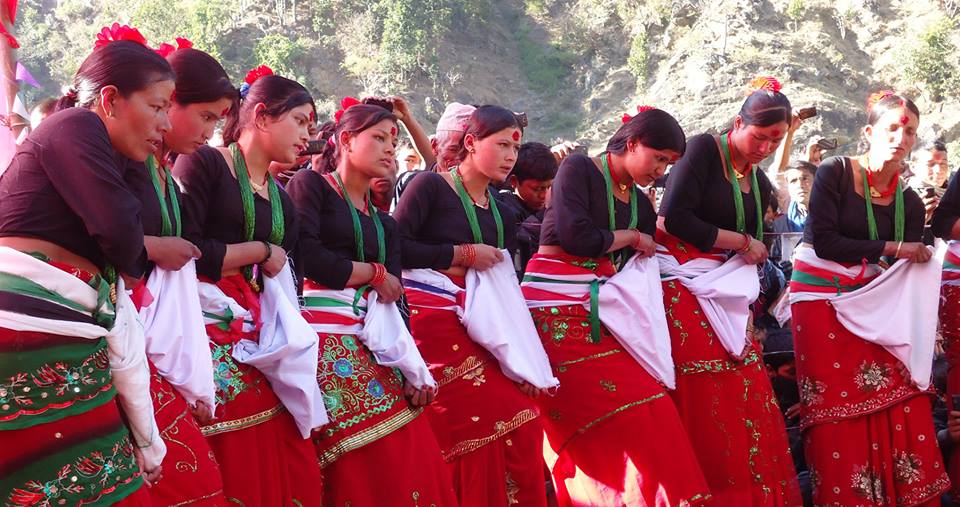
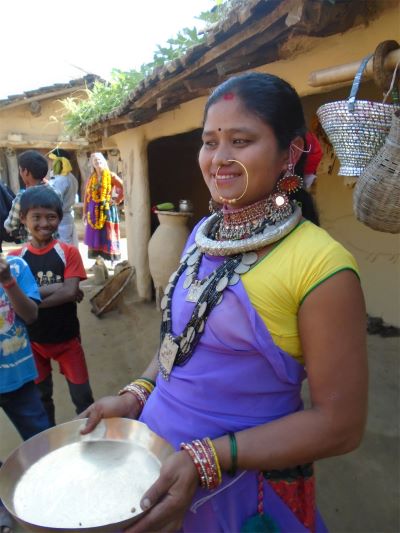
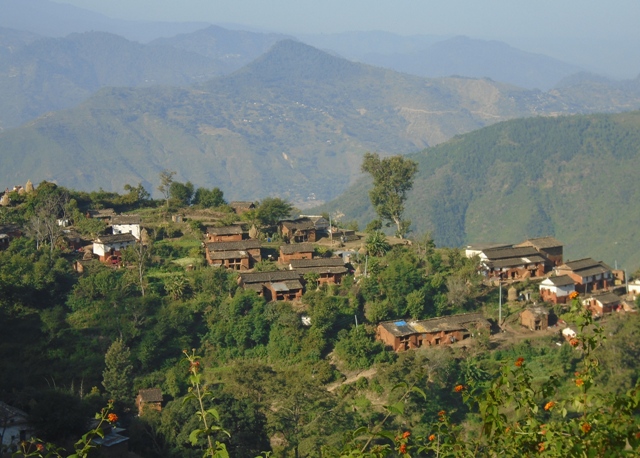
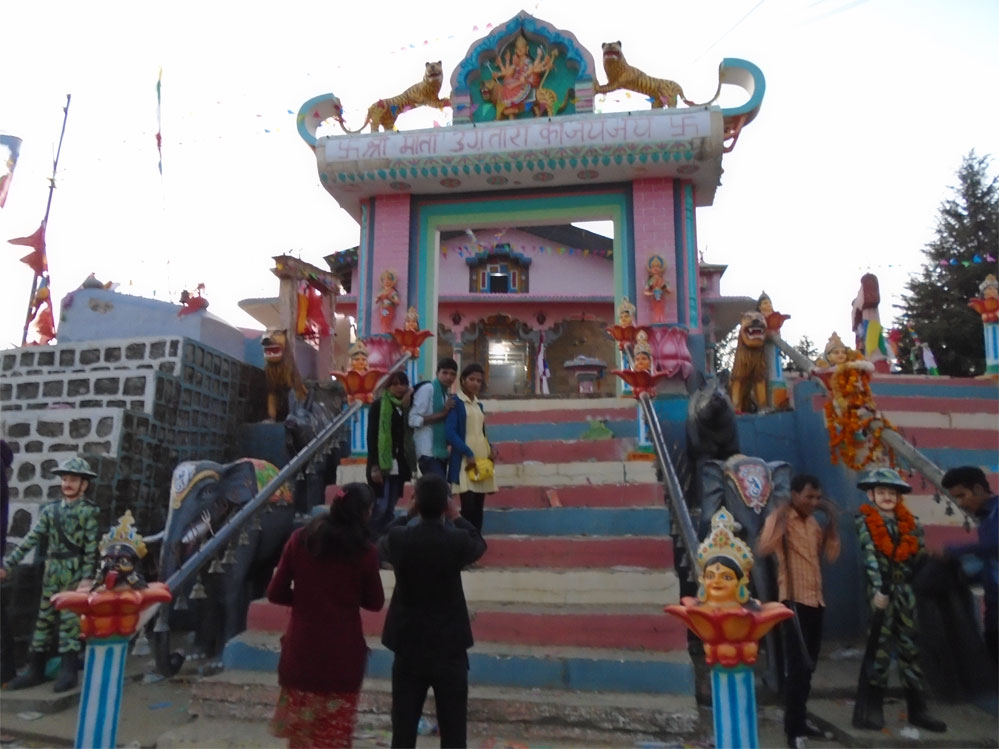
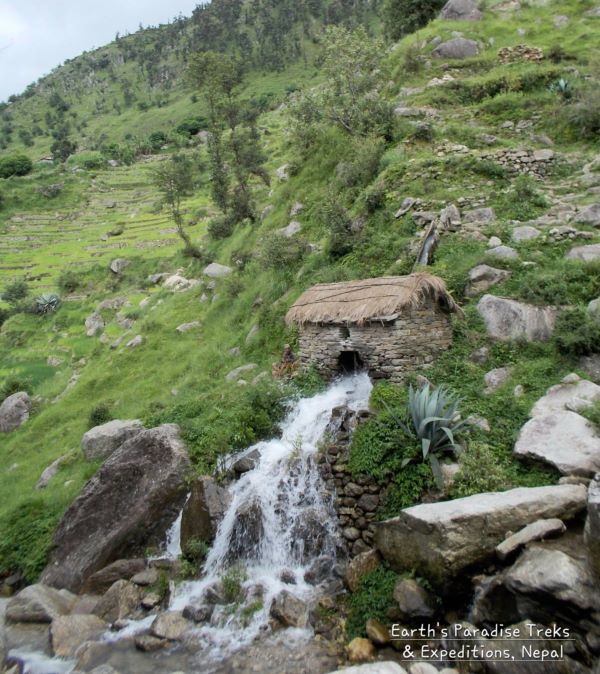
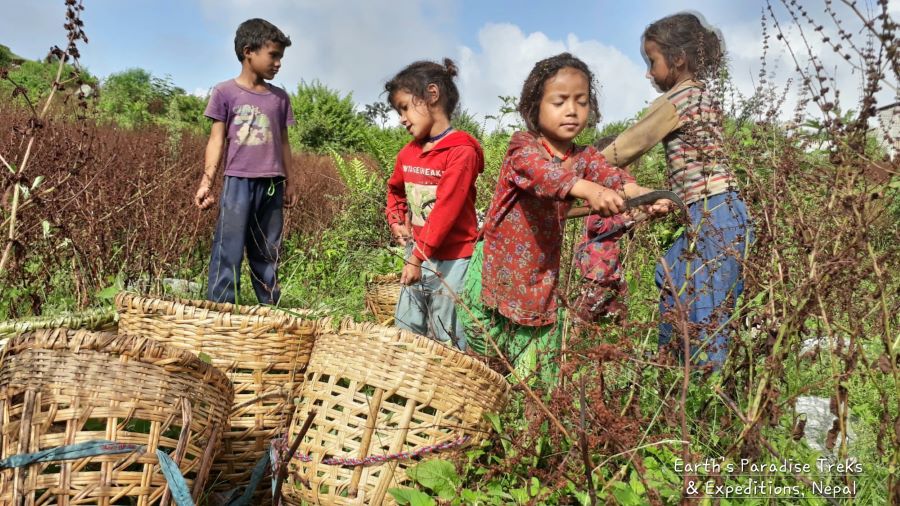
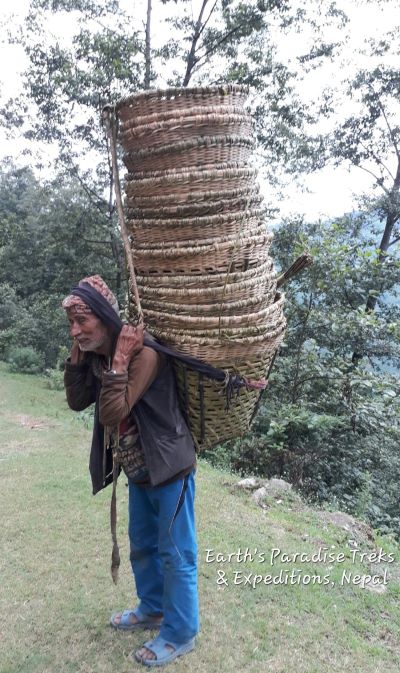
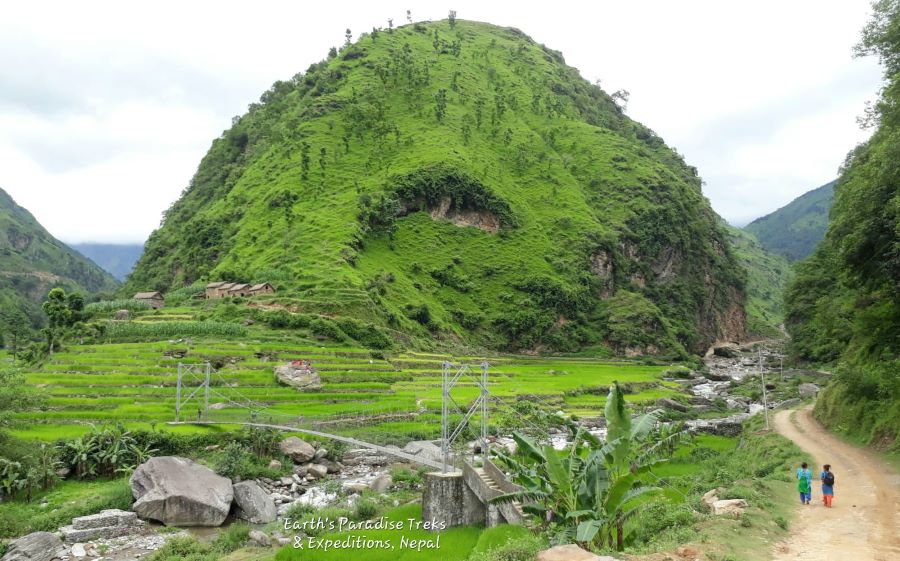
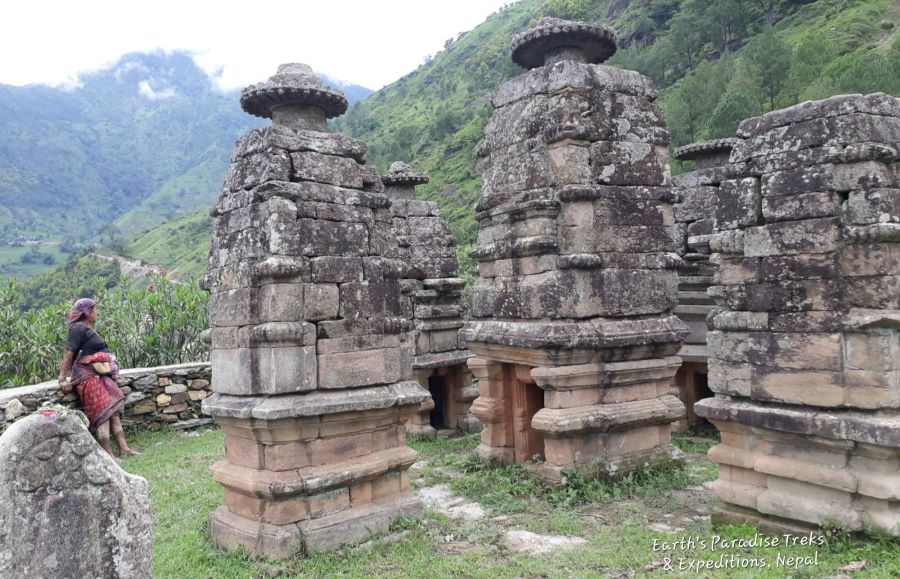

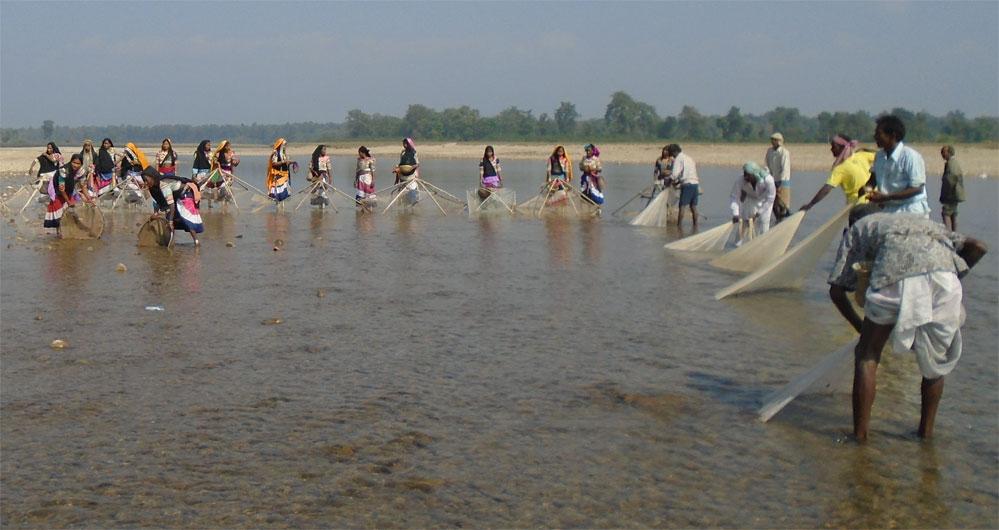
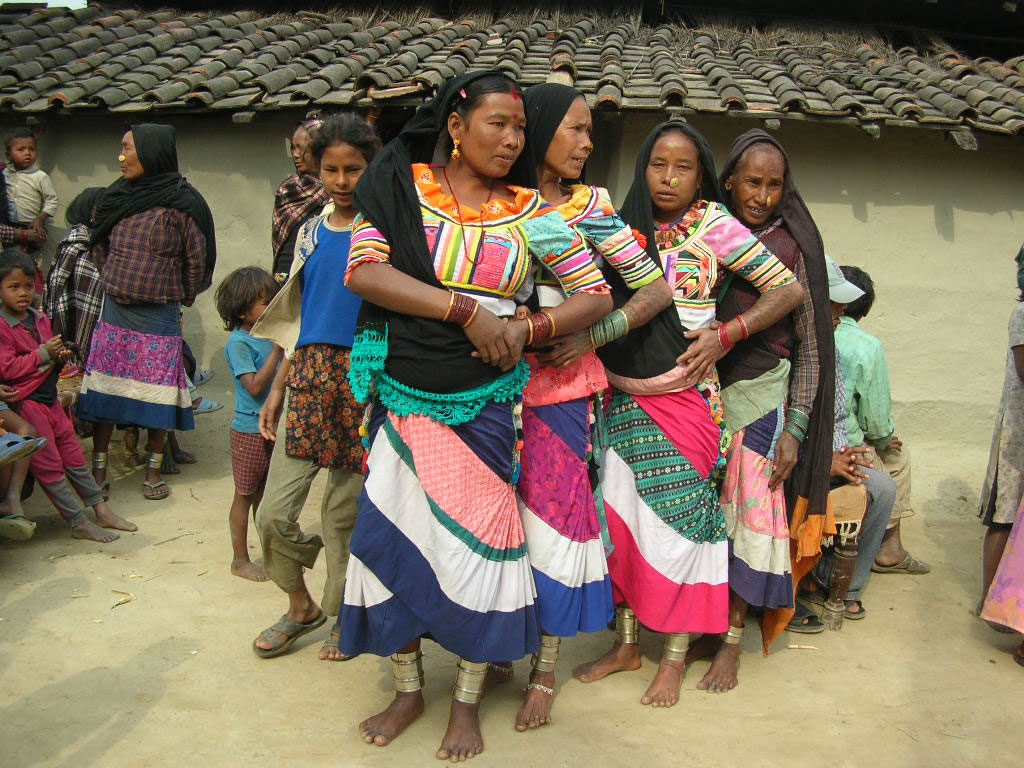
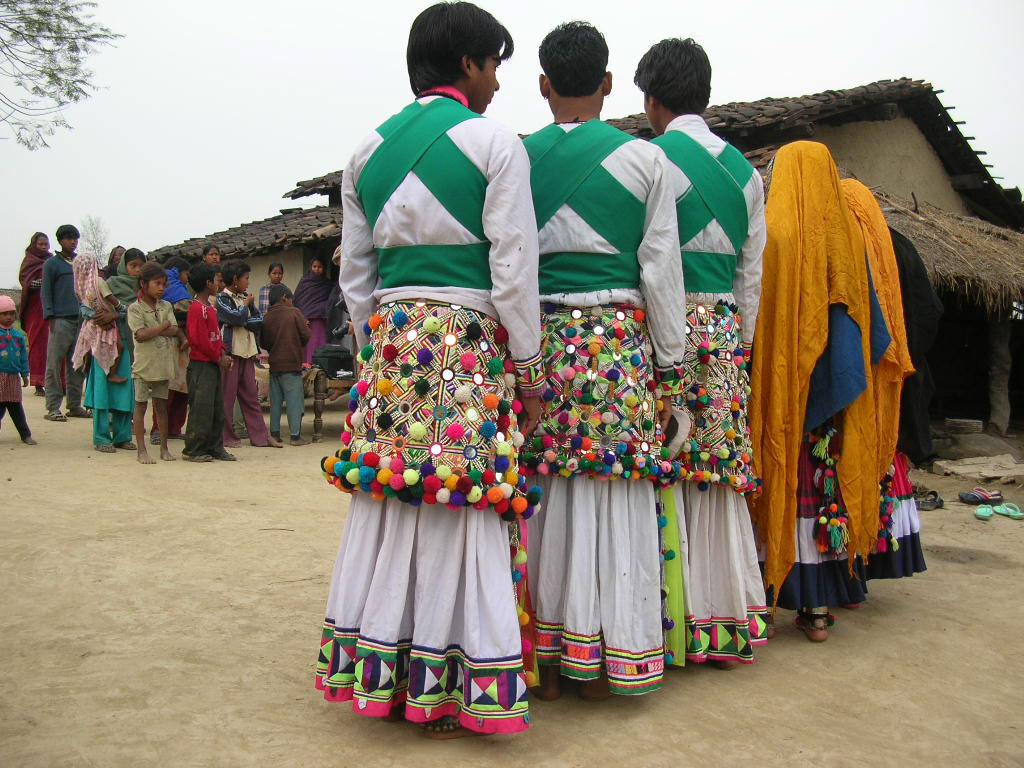
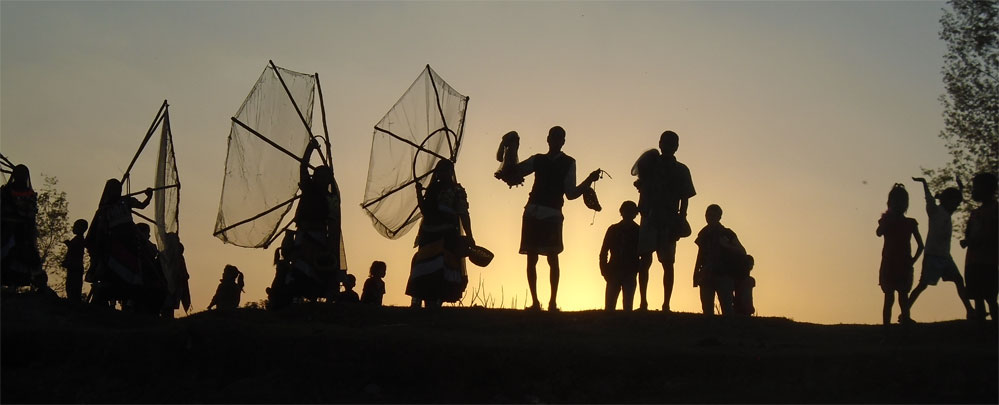
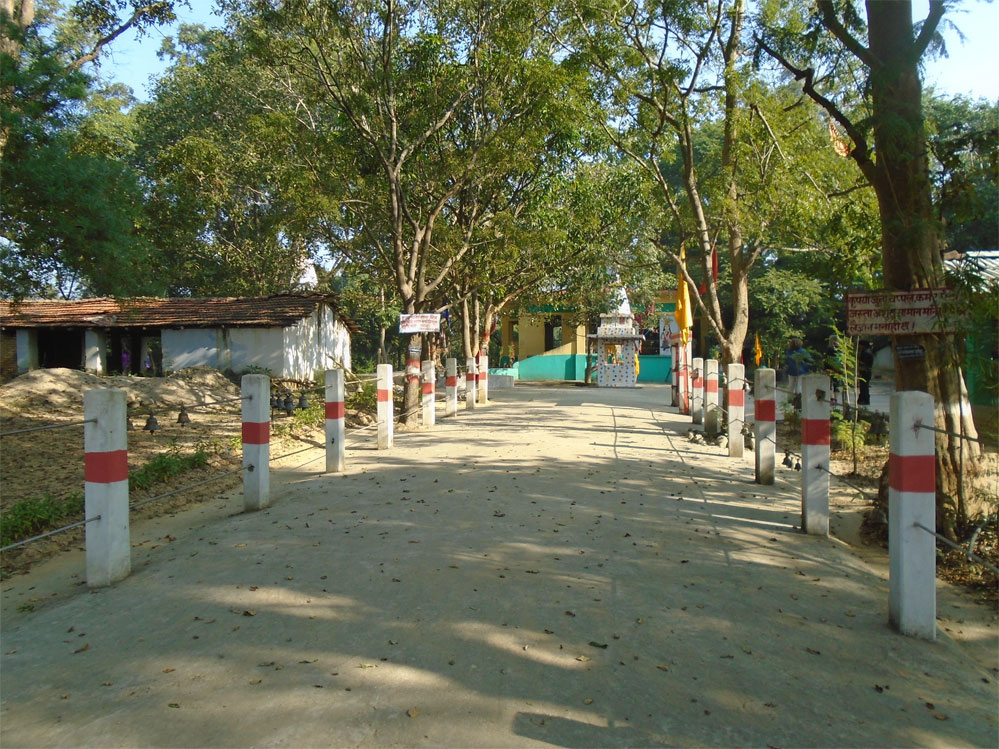
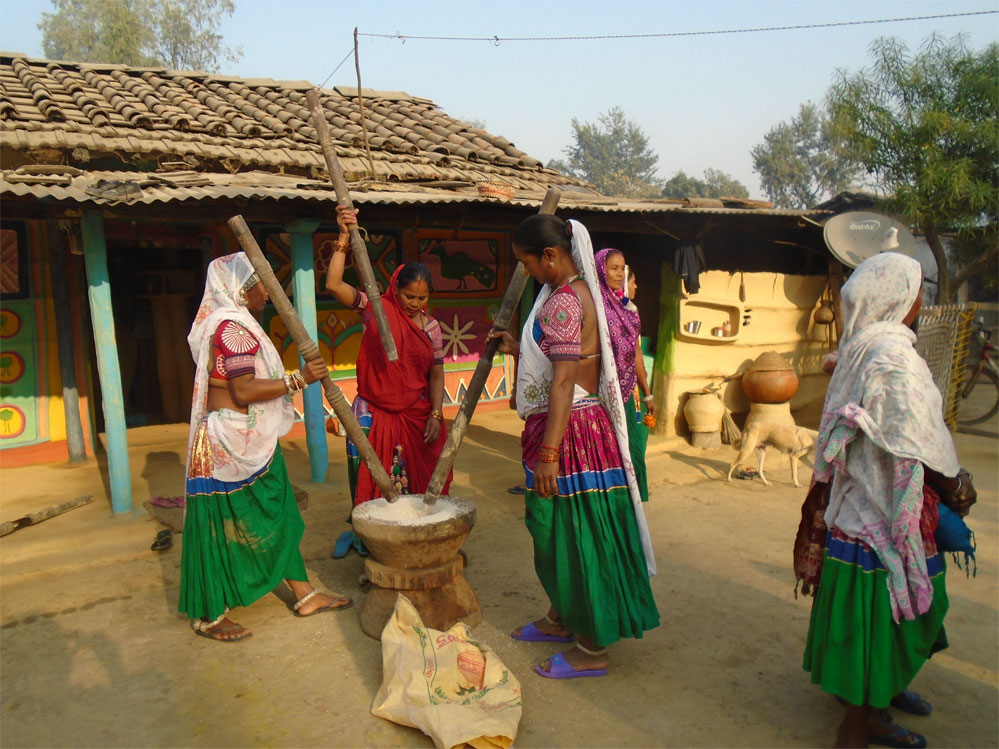
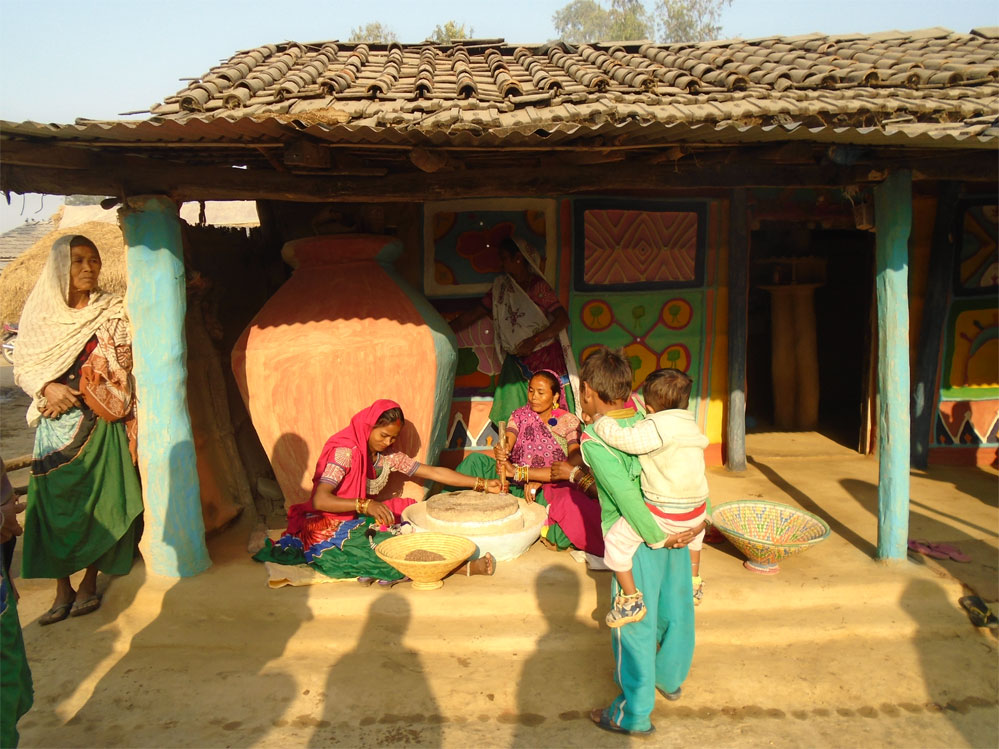
Destination
Activity
Start/End Point
Duration
Grade
Season
Group Size
Hotel/Accomdation
Highest Elevation